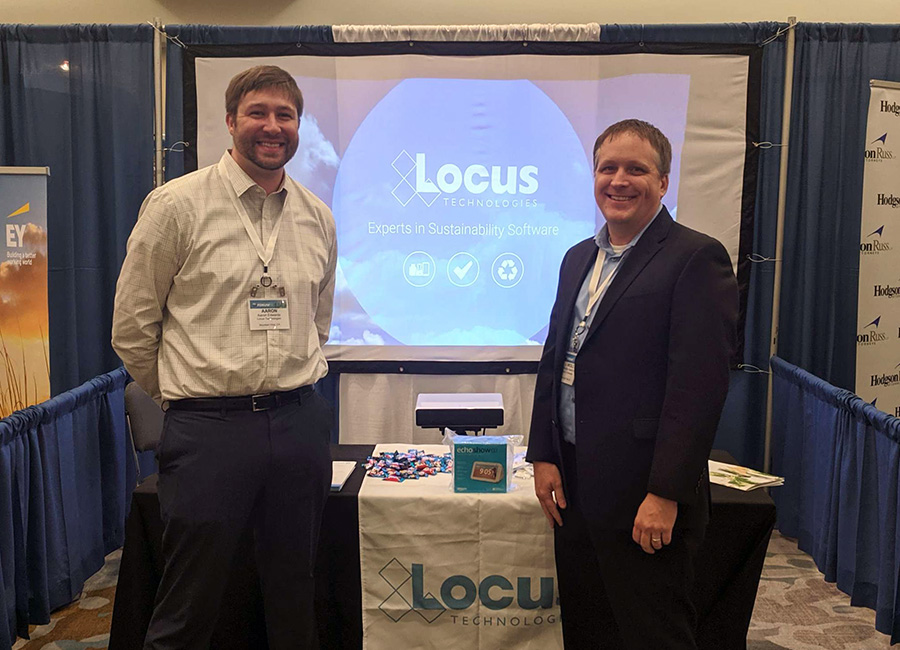When it comes to EHS&S, the “&S” shouldn’t be an afterthought
Locus Technologies is proud to have attended this year’s NAEM EHS&S Forum in Toronto. We were represented by Wes Hawthorne, President of Locus, and forum first-timer, Aaron Edwards, Marketing Associate at Locus.

The forum gave us the opportunity to learn, both from our peers in discussions about EHS&S goals, and from the diverse lineup of respected speakers and presenters. You spoke and we listened. This year, the prevailing topic of discussion was the growth of expectation surrounding sustainability in organizations.
Sustainability initiatives are rapidly moving to the forefront of institutional policy at leading organizations. As consumers, investors, and shareholders are increasingly supporting more sustainable organizations, executives are expecting more impactful sustainability initiatives from their EHS&S departments. Not only that, but executives inherently expect sustainability initiatives to positively affect the bottom line. This means that today’s EHS&S professionals have to manage sustainability initiatives that are vital to company success as well as regulatory management and reporting, often with limited resources.
Our conversations at the NAEM Forum often revolved around the time-consuming nature of regulatory compliance interfering with the escalated focus on sustainability. Many of the professionals we spoke with are dealing with multiple EHS&S platforms, each used for a specific function. Time management is increasingly more essential to EHS&S managers, and juggling between uni-tasked platforms is detrimental to effective sustainability efforts.
Locus developers have designed our software to reduce the labor-intensiveness of regulatory compliance. We offer a configurable single-platform solution for decreasing the amount of time you spend managing KPIs. From available modules in waste management, audit tracking, GHG reporting, and more—our configurable software allows more time to improve your company’s sustainability initiatives.
Sustainability is no longer an afterthought in the eyes of executives, consumers, investors, or shareholders. Having one robust software platform can greatly help EHS professionals integrate that “&S” seamlessly with their other responsibilities.
